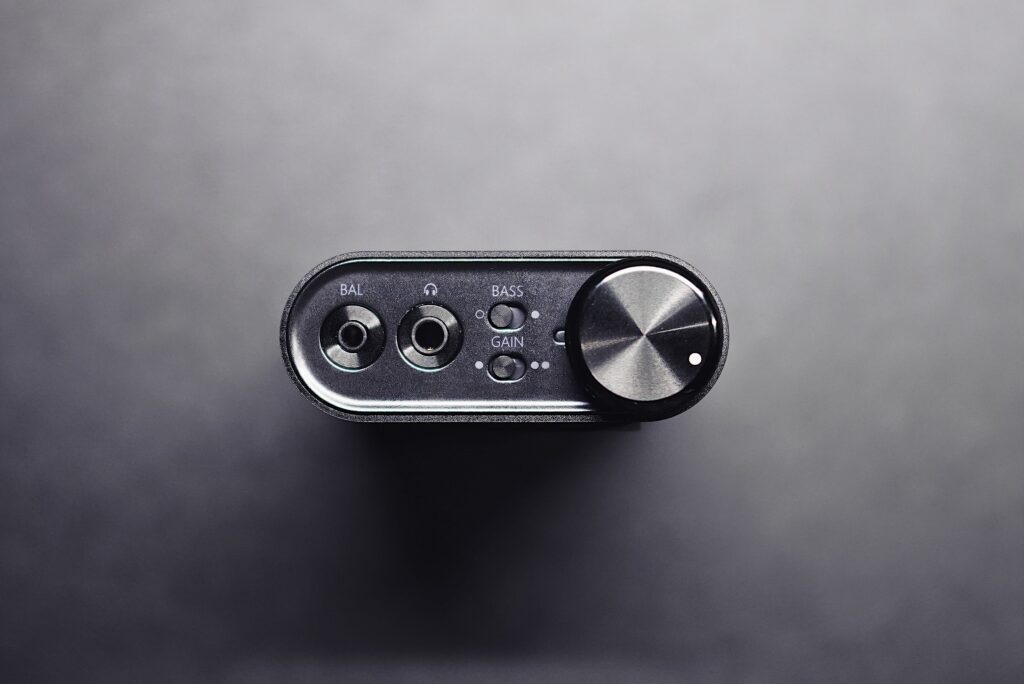In the world of car audio enthusiasts, the battle between 2 Ohm and 4 Ohm subwoofers is a never-ending debate. Each side passionately argues for the superiority of their preferred impedance, claiming better sound quality, increased power handling, or improved overall performance. But what exactly is the difference between these two options, and how does it impact the audio experience inside the vehicle? This article will shed light on the intricacies of the 2 Ohm vs 4 Ohm subwoofers, helping readers make an informed decision when it comes to upgrading their car audio system.

This image is property of images.unsplash.com.
Impedance Basics
Impedance is a fundamental concept in audio systems, particularly when it comes to subwoofers. In simple terms, impedance refers to the opposition that an electrical circuit presents to the flow of alternating current (AC). It is measured in ohms, which is a unit of electrical resistance. Understanding the basics of impedance is crucial for optimizing the performance of subwoofers and ensuring compatibility with amplifiers.
What is impedance?
Impedance can be thought of as the “electrical friction” that opposes the flow of current through a circuit. It consists of two components: resistance (measured in ohms) and reactance (measured in ohms as well). Resistance is the part of impedance that exists due to purely resistive elements in the circuit, while reactance is the part that arises from capacitive or inductive elements.
When it comes to subwoofers, the impedance rating indicates the electrical resistance of the voice coil in the subwoofer driver. This rating determines how much power the subwoofer can handle and affects the overall performance of the audio system.
Understanding ohms
To understand impedance, it is important to grasp the concept of ohms. Ohms are a unit of electrical resistance and represent the degree to which a device or component resists the flow of electrical current. The higher the ohm rating, the greater the resistance to current flow. In the context of subwoofers, ohms indicate how much power the subwoofer can handle and how it interacts with the amplifier.
How does impedance affect subwoofers?
The impedance of a subwoofer has a significant impact on its performance and compatibility with amplifiers. Subwoofers are typically available in two common impedance ratings: 2 ohms and 4 ohms.
The impedance of a subwoofer affects its power handling capabilities, which determines the maximum amount of power it can safely handle without distortion or damage. Lower impedance subwoofers (such as 2 ohms) generally have higher power handling capabilities compared to higher impedance subwoofers (such as 4 ohms). However, it is important to consider the compatibility of the subwoofer’s impedance with the amplifier being used.
Power Handling
Power handling capabilities of 2 ohm subwoofers
Subwoofers with a 2 ohm impedance rating typically have greater power handling capabilities compared to their 4 ohm counterparts. The lower impedance allows them to draw more power from the amplifier, resulting in louder and more impactful bass output. This makes 2 ohm subwoofers an excellent choice for individuals seeking powerful and dynamic bass performance.
Power handling capabilities of 4 ohm subwoofers
While 2 ohm subwoofers may have greater power handling capabilities, 4 ohm subwoofers still offer respectable performance. They draw less power from the amplifier compared to 2 ohm subwoofers, but they can still produce impressive bass response within their limitations. 4 ohm subwoofers are generally more widely available and can be a cost-effective option for those on a budget.
Which is more efficient?
In terms of efficiency, 2 ohm subwoofers are generally more efficient than 4 ohm subwoofers. This means that for the same input power, a 2 ohm subwoofer will typically produce louder and more impactful bass compared to a 4 ohm subwoofer. However, it is important to note that efficiency is not the only factor to consider when choosing between the two impedance ratings. Compatibility with amplifiers and the overall sound quality should also be taken into account.
Wiring Configurations
Series wiring (Adding impedance)
Series wiring is a common method used to add impedance to a subwoofer setup. In this configuration, the positive terminal of one subwoofer is connected to the negative terminal of the next subwoofer, and so on, creating a chain. By adding more subwoofers in series, the total impedance of the system increases. For example, if two 4 ohm subwoofers are wired in series, the total impedance would be 8 ohms (4 ohms + 4 ohms).
This method of wiring can be useful when trying to match the impedance of the subwoofer setup to the amplifier’s requirements. It allows for greater flexibility in terms of system configuration and can help optimize the audio system’s performance.
Parallel wiring (Reducing impedance)
Parallel wiring, on the other hand, is used to reduce the impedance of a subwoofer setup. In this configuration, the positive terminals of all the subwoofers are connected together, as are the negative terminals. By connecting subwoofers in parallel, the total impedance of the system decreases. For example, if two 4 ohm subwoofers are wired in parallel, the total impedance would be 2 ohms (1/(1/4 + 1/4) = 2).
Parallel wiring is often used when aiming for a lower overall impedance to match the amplifier’s capabilities. It allows for increased power transfer from the amplifier to the subwoofers, resulting in louder and more efficient bass output.
Impedance matching and bridging
Impedance matching is the process of ensuring that the impedance of the amplifier matches the impedance of the subwoofers. This ensures optimal power transfer and prevents clipping or distortion. It is important to consult the amplifier’s specifications to determine the recommended impedance range.
Bridging refers to the practice of combining two amplifier channels to power a single subwoofer. This can be useful when using multiple subwoofers with higher impedance ratings. However, it is critical to ensure that the amplifier is bridgeable and that the impedance remains within the amplifier’s safe operating range.
Compatibility with Amplifiers
Matching amplifier impedance
Amplifier impedance matching is crucial for optimal performance and to prevent damage to both the subwoofer and amplifier. It is essential to select an amplifier that can handle the impedance rating of the subwoofer or subwoofers being used. Most amplifiers will indicate a recommended impedance range, and it is advisable to stay within that range.
Benefits and drawbacks of using a 2 ohm sub with a 4 ohm amplifier
Using a 2 ohm subwoofer with a 4 ohm amplifier can have both benefits and drawbacks. On the positive side, the 2 ohm subwoofer will draw more power from the amplifier, resulting in louder and more dynamic bass. However, this mismatch in impedance can put additional strain on the amplifier and potentially cause overheating or even damage. It is crucial to monitor the amplifier’s temperature and ensure that it is capable of handling the increased power demands.
Benefits and drawbacks of using a 4 ohm sub with a 2 ohm amplifier
Similarly, using a 4 ohm subwoofer with a 2 ohm amplifier also has benefits and drawbacks. The higher impedance of the subwoofer will impose less strain on the amplifier, reducing the risk of overheating or damage. However, the bass output may not be as powerful or impactful compared to a 2 ohm subwoofer. It is vital to consider the intended use of the audio system and the desired bass performance when making this compatibility decision.

This image is property of images.unsplash.com.
Sound Quality
Bass response with 2 ohm subs
In general, 2 ohm subwoofers tend to offer powerful and impactful bass response. The lower impedance allows them to draw more power from the amplifier, resulting in greater control over the bass frequencies. This translates to deeper, tighter, and more detailed bass reproduction. However, the overall sound quality is influenced by other factors such as the subwoofer’s design, enclosure type, and amplifier quality.
Bass response with 4 ohm subs
4 ohm subwoofers can also deliver impressive bass response, albeit with some differences compared to 2 ohm subs. Due to the higher impedance, 4 ohm subwoofers draw less power from the amplifier. While this may result in slightly less impactful bass, it can still provide satisfying low-frequency reproduction. The overall bass performance is influenced by various factors, including the subwoofer’s design, enclosure, and amplifier quality.
Factors affecting sound quality
Sound quality is influenced by numerous factors when it comes to subwoofers. Besides impedance, the design and construction of the subwoofer, the enclosure type, and the quality of the amplifier all play crucial roles. It is essential to assess and balance all these factors to achieve the desired sound characteristics in an audio system.
Subwoofer Options
Availability of 2 ohm subwoofers
2 ohm subwoofers are widely available and come in various sizes, designs, and price ranges. They are popular among car audio enthusiasts and are favored for their ability to produce powerful and deep bass. Whether you are looking for a budget option or a high-end subwoofer, there are numerous choices available in the market.
Availability of 4 ohm subwoofers
Similarly, 4 ohm subwoofers are also readily available. They are often more affordable compared to their 2 ohm counterparts, making them a popular choice for individuals on a budget. Just like 2 ohm subwoofers, they come in various sizes, designs, and price ranges.
Cost considerations
Cost can be an important factor when choosing between 2 ohm and 4 ohm subwoofers. Generally, 4 ohm subwoofers are more cost-effective and provide respectable bass performance within their limitations. If budget is a concern, exploring the options available in the 4 ohm range could be a sensible choice. However, if you prioritize powerful and dynamic bass, 2 ohm subwoofers may be worth the investment.

This image is property of images.unsplash.com.
Amplifier Options
Availability of amplifiers for 2 ohm setup
Amplifiers compatible with 2 ohm subwoofer setups are readily available in the market. There are several reputable brands that offer high-quality amplifiers capable of delivering the power required to drive 2 ohm subwoofers. It is essential to consider the amplifier’s power rating, compatibility with the subwoofer impedance, and its overall sound quality when making a selection.
Availability of amplifiers for 4 ohm setup
Similarly, amplifiers suitable for 4 ohm subwoofer setups are widely available. There is a diverse selection of amplifiers from various manufacturers that can meet the power requirements of 4 ohm subwoofers. When choosing an amplifier, it is important to carefully consider the amplifier’s specifications and ensure compatibility with the desired 4 ohm subwoofer setup.
Amplifier features to consider
When selecting an amplifier, it is important to consider various features that can enhance the audio system’s performance. Features such as adjustable crossover points, bass boost controls, and subsonic filters allow for greater customization and control over the subwoofer output. Additionally, considering the amplifier’s power efficiency, build quality, and thermal protection features can help in making an informed decision.
Installation Considerations
Space requirements
Before installing subwoofers, it is essential to assess the available space in the vehicle or sound system setup. Subwoofers typically require a dedicated enclosure or box, and the size of this enclosure will depend on the specific subwoofer’s design and specifications. It is crucial to ensure that there is adequate space for proper installation and to optimize the subwoofer’s performance.
Heat dissipation
Subwoofers, particularly those with higher power handling capabilities, can generate significant heat during operation. It is important to consider heat dissipation when planning the installation. Ensuring proper ventilation and allowing adequate airflow around the amplifier and subwoofer can prevent overheating and protect the components from damage.
Wiring complexity
Installing subwoofers involves wiring connections, which can vary in complexity depending on the system configuration. It is important to carefully follow the manufacturer’s instructions and wiring diagrams to ensure proper connections and avoid any damage or performance issues. Seeking professional assistance or guidance can be beneficial, especially for individuals who are not familiar with car audio installations.
Factors to Consider
Budget constraints
Budget constraints play a significant role when deciding between 2 ohm and 4 ohm subwoofers and amplifiers. While 2 ohm subwoofers generally offer more power handling capabilities and efficiency, they can be more expensive compared to 4 ohm options. It is important to consider the overall cost of the subwoofer, amplifier, and any necessary accessories within the available budget.
Desired sound characteristics
Understanding your desired sound characteristics is crucial when selecting the appropriate impedance for your system. Consider whether you prioritize powerful and impactful bass or if you prefer a more cost-effective solution. If budget allows, listening to different subwoofers and amplifiers in person can help you determine which impedance configuration best suits your personal preferences.
Overall system compatibility
It is essential to consider the overall compatibility of the audio system, including the subwoofers, amplifiers, and other components. Ensuring that all components work together harmoniously can enhance the overall sound quality and prevent any potential damage or performance issues. Consulting professionals or experienced individuals in the field can provide valuable insights and recommendations based on system compatibility.
Final Decision
Determining the right impedance for your system
Ultimately, the decision between 2 ohm and 4 ohm subwoofers depends on your specific requirements and priorities. Considering aspects such as power handling capabilities, compatibility with amplifiers, desired sound characteristics, and budget constraints can help guide your decision. It may also be beneficial to consult professionals or audio enthusiasts with experience in subwoofer setups to gain additional insights.
Considering future upgrades
When deciding on the impedance for your subwoofer setup, it is important to consider future upgrades and system expandability. If you anticipate expanding your system or upgrading components in the future, it may be wise to select a setup that allows for compatibility and flexibility. This can potentially save costs and prevent the need for significant system modifications down the line.
Seeking professional advice
For individuals who are new to car audio or audio systems in general, seeking professional advice can be invaluable. Professionals can assess your specific requirements, provide expert recommendations, and ensure proper installation and setup. This can help maximize the performance and longevity of your subwoofer system while avoiding potential pitfalls or compatibility issues.
In conclusion, choosing between 2 ohm and 4 ohm subwoofers involves considering various factors such as power handling capabilities, compatibility with amplifiers, cost considerations, and personal sound preferences. Understanding the basic principles of impedance and its impact on subwoofer performance can assist in making an informed decision. By carefully assessing your specific needs and seeking professional advice when necessary, you can create a well-matched and optimized audio system that delivers the bass experience you desire.
